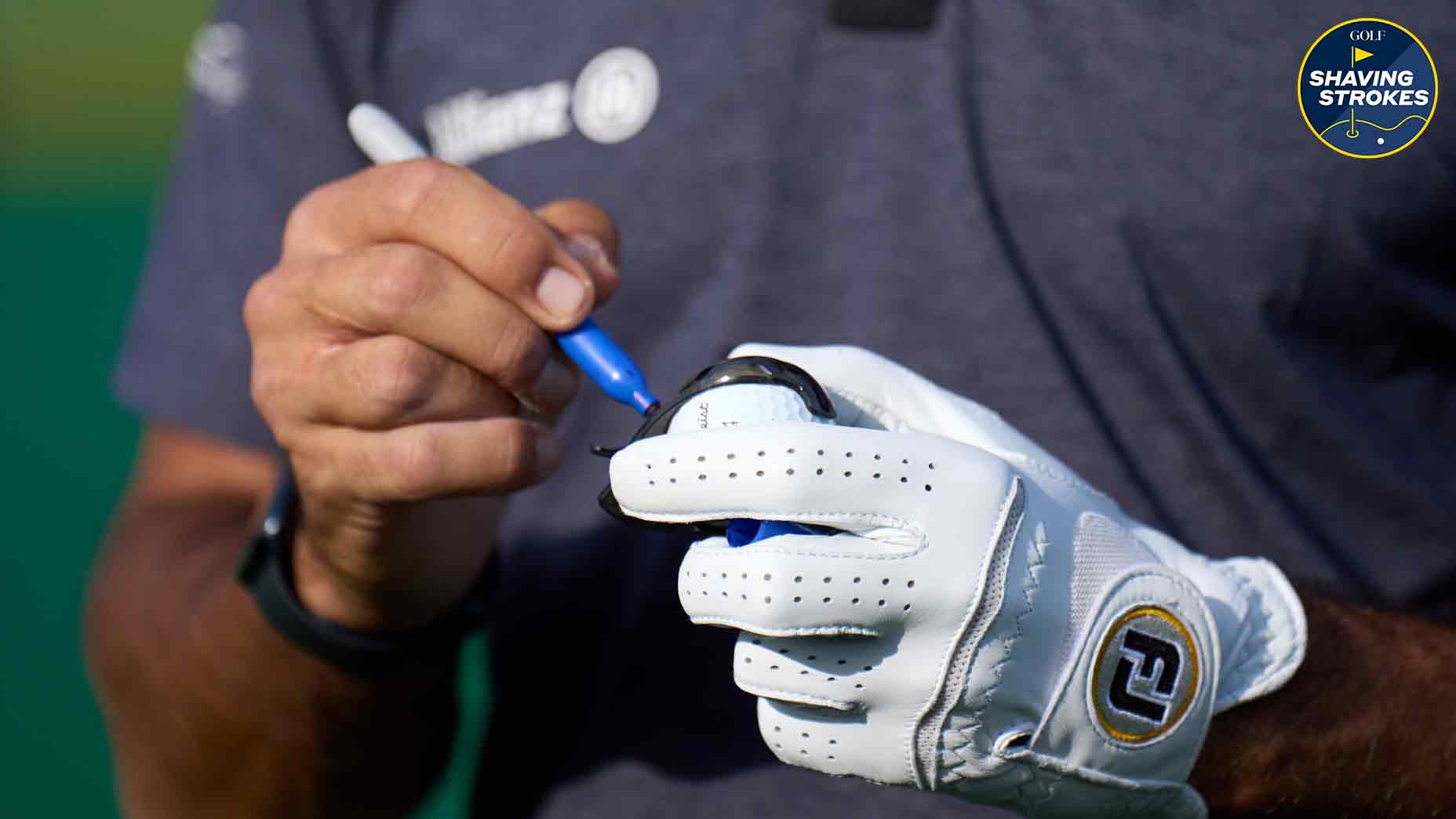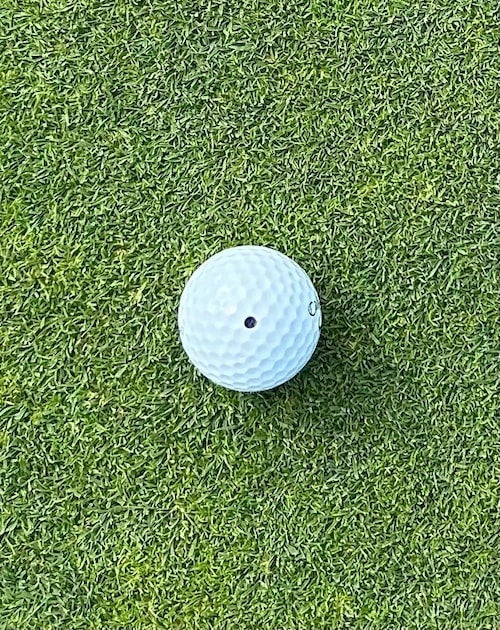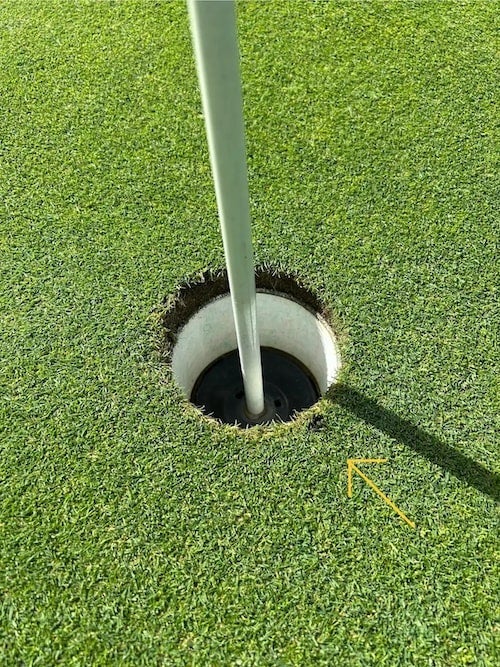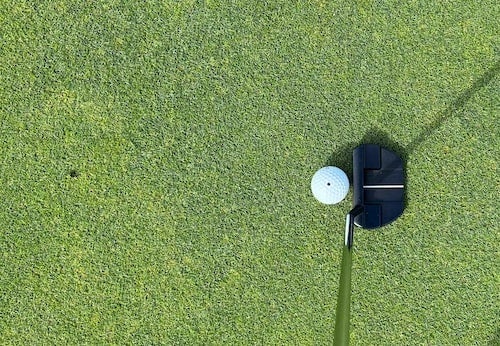Ditch the line on your golf ball — use this little trick instead
- Share on Facebook
- Share on Twitter
- Share by Email

Using a line on the golf ball while putting is popular, but it's not the best option, says this top teacher.
Getty Images
If you look around the practice green before a round, you’ll probably notice more than a few players using lines on their golf balls — using them as a visual to help a person align and aim before hitting a putt.
When it comes down to it, using a line versus not using a line is really about personal preference.
Personally speaking, I’ve tried putting with a line on my golf ball and just didn’t like it. Maybe it’s just me, but I found it to be just another thing I had to worry about before setting up for a putt, rather than trusting my process of reading the green with my feet, seeing the slopes with my eyes, and aiming from there.
Pro explains why using a line on your golf ball isn’t always ideal when puttingBy: Zephyr Melton
But there’s more than one way to skin a cat, and golf offers players the opportunity to use what works best for them — so if you use a line on the golf ball and it’s effective for you, so be it.
But is it really the best way to help dial in your putting aim?
I tapped GOLF Teacher to Watch Todd Casabella to get his thoughts, with the Director of Instruction at Barrington GC sharing a unique approach that ditches the line and uses three dots instead. Check out how it works below.
Use 3 spots instead of drawing a line on the golf ball
“If you’re like most golfers, the commitment to using the line on the ball varies from month to month, round to round, or even hole to hole,” Casabella said. “So if your success with the line fades, here’s a different strategy for you — I call it ‘three-spot’ putting.”
Why does Casabella prefer this way over using a line on the ball? Simply put, it’s less cerebral.
“When using a line, golfers tend to get focused too intently on the line,” he says. “But the spots are a little bit more abstract, which frees golfers up to react more athletically.”
Casabella then walks through how it works.
Spot one

Using a permanent marker, put a single dot on the ball, where there’s the largest clean space without any writing, logos, or graphics. This is spot one.
Spot three (I know, I skipped two, we’ll get there)

Mark your ball and then begin the green-reading process, getting a general idea of the green’s slope. After doing so, now identify the point that you see the ball entering the hole. This is spot three.
If it’s helpful, many players use clock references to identify this point. For example, a straight putt would enter the hole at 6:00, and a putt with a lot of right-to-left break would enter the hole at 3:00. The putt shown in the photo above is entering the hole at about 4:30.
Determining what part of the clock the ball will enter the hole helps you identify spot two.
Spot two

Remove your ball marker and place the ball back in its original position on the green. When doing this, make sure that the dot on the ball is on the very top and facing up. Now step back and visualize the path that the ball will take to roll over spot three and into the hole.
Once you see that path, visualize a spot on the ground that’s about six to 18 inches in front of the ball that’s on the same line. This is spot two.
Now that you’ve got spot one, spot two, and spot three, it’s time to sink the putt, adds Casabella.
“Your intent should be to roll the spot on the ball over the spot just in front of the ball, and then over the spot in front of the hole,” he explains. “Once you master this technique, making putts becomes as easy as 1, 2, 3.”

Perfect Roll Putting Mirror
View Product
Latest In Instruction

Golf.com Contributor

Nick Dimengo
Golf.com Editor










